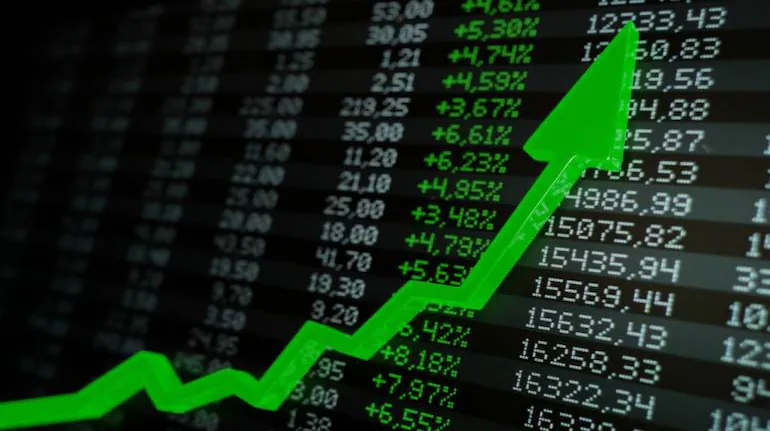Sectoral Contributions to Nifty 50 and Sensex

Stock market indices like the Nifty 50 and Sensex serve as barometers of India’s economic health, reflecting the performance of the country’s most significant publicly traded companies. These indices are composed of stocks from various sectors, each contributing differently to their movement. Understanding how different sectors impact these indices is crucial for investors who wish to track nifty 50 and track sensex today to make informed decisions.
What are Nifty 50 and Sensex?
Before diving into sectoral contributions, let’s briefly understand these indices:
- Nifty 50: The benchmark index of the National Stock Exchange (NSE), comprising 50 large-cap stocks from various sectors.
- Sensex: The benchmark index of the Bombay Stock Exchange (BSE), composed of 30 well-established companies representing diverse sectors.
Both indices serve as indicators of market trends, economic performance, and investor sentiment.
Opening a Demat Account
To invest in the stock market and take advantage of sectoral trends, it is essential to open demat account. A demat account facilitates the electronic storage of shares and securities, making transactions seamless and efficient. Investors can buy, sell, and hold stocks with ease, ensuring a secure and hassle-free trading experience. Choosing a reputed brokerage firm with a user-friendly interface and competitive charges is crucial for smooth investing.
Sectoral Contributions to Nifty 50 and Sensex
The performance of Nifty 50 and Sensex is driven by the collective strength of various sectors. Below is an overview of the primary sectors and their impact on these benchmark indices:
1. Financial Services (Banking & NBFCs)
The financial sector, including banks and non-banking financial companies (NBFCs), holds the highest weightage in both indices. Leading banks such as HDFC Bank, ICICI Bank, and SBI play a pivotal role in influencing market sentiment.
Contribution:
- Financial services contribute around 35-40% to the Nifty 50.
- Major banking stocks have a strong correlation with interest rate changes and monetary policy decisions.
- Investors opening a demat account often consider banking stocks due to their liquidity and stable returns.
2. Information Technology (IT)
The IT sector, driven by companies like TCS, Infosys, and Wipro, is a crucial contributor to Nifty 50 and Sensex. The global demand for digital services and outsourcing makes this sector highly resilient to economic downturns.
Contribution:
- IT stocks constitute 12-15% of Nifty 50.
- The sector benefits from a weak rupee as exports dominate revenue streams.
- Growth in AI, cloud computing, and cybersecurity fuels long-term potential.
3. Energy & Oil & Gas
Companies in the energy sector, such as Reliance Industries, ONGC, and Indian Oil, significantly impact index movements. The sector is influenced by crude oil prices, government policies, and global energy demand.
Contribution:
- Energy sector contributes approximately 10-12% to Nifty 50.
- Rising crude oil prices can increase inflation, affecting overall market stability.
4. Consumer Goods & FMCG
The Fast-Moving Consumer Goods (FMCG) sector, with companies like Hindustan Unilever, ITC, and Nestlé, remains a defensive bet during volatile market conditions.
Contribution:
- FMCG stocks contribute around 8-10% to Nifty 50.
- This sector benefits from steady domestic demand and pricing power.
5. Pharmaceuticals & Healthcare
The healthcare and pharmaceutical industry has gained significant importance, especially after the COVID-19 pandemic. Companies like Sun Pharma, Dr. Reddy’s, and Cipla contribute to index stability.
Contribution:
- Healthcare sector holds a 5-7% weightage in Nifty 50.
- Demand for healthcare services ensures consistent performance.
- Regulatory policies and research advancements play a major role in stock valuations.
6. Automobiles & Ancillaries
The automobile sector, led by Maruti Suzuki, Tata Motors, and Mahindra & Mahindra, is crucial for market performance. Factors like consumer demand, fuel prices, and government policies impact stock valuations.
Contribution:
- Auto stocks form around 5-7% of Nifty 50.
- Electric vehicle (EV) advancements are reshaping market trends.
- Cyclical in nature, dependent on economic growth and interest rates.
7. Infrastructure & Realty
Infrastructure and real estate sectors have seen increasing influence due to government-driven projects and urbanization. Stocks like Larsen & Toubro (L&T) and DLF contribute significantly.
Contribution:
- Realty and infra stocks account for 3-5% of Nifty 50.
- High-interest rates can dampen sector growth.
- Government policies like Smart Cities and affordable housing drive momentum.
8. Metals & Mining
Metals, including steel and aluminum, are vital for industrial growth. Companies like Tata Steel, Hindalco, and JSW Steel are key players in this sector.
Contribution:
- Metals contribute around 4-6% to Nifty 50.
- Global commodity prices heavily influence stock movement.
- Infrastructure and manufacturing demands boost long-term potential.
9. Telecom
Telecom companies like Bharti Airtel and Reliance Jio are essential for connectivity and digital expansion.
Contribution:
- Telecom sector holds 2-4% weightage in Nifty 50.
- Increasing mobile penetration and 5G rollout drive future growth.
10. Media & Entertainment
Though a smaller segment, media stocks like Zee Entertainment and Sun TV influence investor sentiment based on advertising revenues and content consumption patterns.
Contribution:
- Media contributes around 1-3% to Nifty 50.
- Digital transformation and OTT platforms shape industry growth.
Why Understanding Sectoral Contributions is Important
- Diversification: Investors can balance their portfolios across different sectors.
- Risk Management: Recognizing sectoral trends helps mitigate risks.
- Better Investment Decisions: A deep understanding aids in making informed trading decisions.
- Tracking Market Movements: Investors who actively track Nifty 50 and track Sensex today can predict potential gains and losses based on sectoral shifts.
How to Leverage Sectoral Analysis for Investment
- Diversify Across Sectors: Avoid overexposure to a single sector.
- Keep an Eye on Economic Indicators: Interest rates, inflation, and policy decisions impact sectoral performance.
- Use Sectoral ETFs: Exchange-traded funds (ETFs) provide diversified exposure to specific sectors.
- Open Demat Account: To start investing in stocks, the first step is to open a demat account, which allows seamless trading of shares and ETFs.
Conclusion
Sectoral contributions to Nifty 50 and Sensex play a crucial role in shaping market movements. The financial, IT, energy, automobile, pharma, FMCG, and metals sectors are among the most influential. Understanding their impact helps investors make strategic investment decisions. By keeping track of sectoral trends and using tools like ETFs and diversified portfolios, one can maximize investment returns while minimizing risks.





